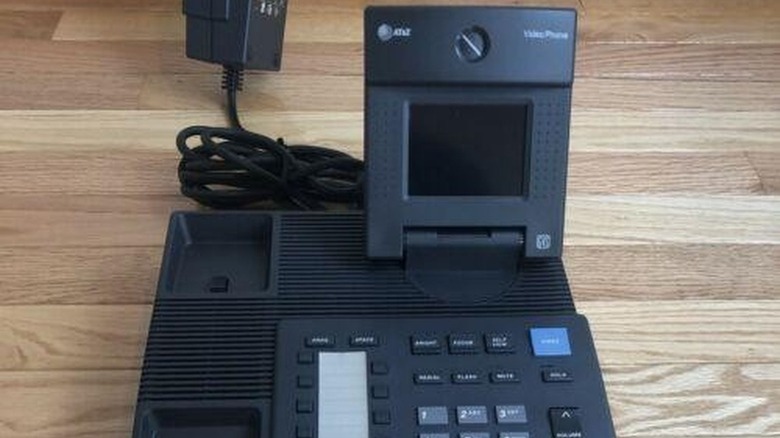You Will Never Guess What AT&T's Videophone Sold For In 1992
Ah, 1992. What a year. The Cold War ended. Minnesota's Mall of America opened. Gold hovered just under $351 an ounce (now $1,750.00 as of this writing). "The Silence of the Lambs" wowed the Oscars. And AT&T unveiled the first glimpse of the future with the world's first-ever full-color motion videophone.
And with just one ounce of gold, at today's prices, you could get yourself one. But only one.
The VideoPhone 2500 looked like a modern push-button desk phone equipped with a personal video camera lens and a state-of-the-art swiveling 3.3-inch LCD screen. This attempt was different from the still-frame Picturephones of the past because it used the latest digital compression technology to reduce the bandwidth required to transmit full-motion video over existing analog phone lines already in use. Just plug it into the existing wall jack, and you are good to go without adding a single penny to the phone call cost. This was all accomplished by using the built-in V.34 modem transmitting at either 19.2 or 16.8 kilobits per second — screaming speeds for the day.
With a paltry 10 frames per second, the image stuttered and was a bit fuzzy, but it was still true "motion" on the screen — a vast technological step up from simply displaying a static image. For the first time, you could really "visit grandparents without leaving your home," which is precisely what AT&T promised in promoting the VideoPhone to the masses, hoping it would sell like hot buttered biscuits.
A costly new way to 'reach out and touch someone'
Remember, cell phones were still a nascent gadget that not everyone owned, and it was still a decade away from coming equipped with a camera. There was no such thing as Skype, Zoom, or Facetime that let people easily "reach out and touch someone" in real time while talking with them. It was, quite simply, revolutionary tech for the time.
Unfortunately, it cost an arm and a leg. And maybe a few fingers. Initially, the unit sold for $1,599.99. But it was completely useless without someone having another VideoPhone on the other end. But hey, AT&T went the extra mile and conveniently dropped the price by $150 each if you bought two or more of these buggers. Another option, according to CNN Business, was that you could rent one for $30 a day. If people had that kind of money, they could buy it outright.
Some of the marketing material for the VideoPhone 2500 touted a "Self View" button that allowed the user to see how they would look to your other party before initiating the call. Imagine actually caring about how you look before initiating a video call. Preposterous!
AT&T stopped selling the VideoPhone two years later due to lack of demand (via CNN).
